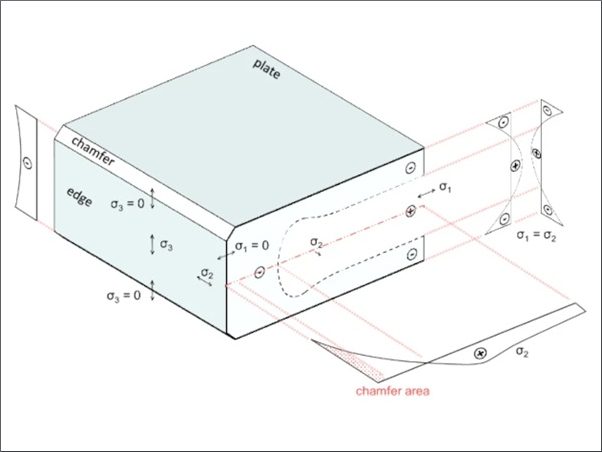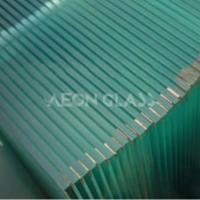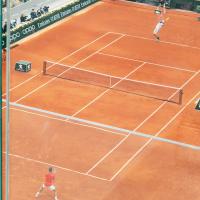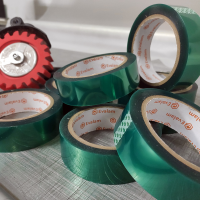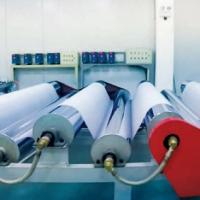Strategically placed sprinklers and extinguishers can make a tremendous difference in how quickly a fire can be suppressed.
The important job of compartmentation is often overlooked, because it is the work of more passive forms of protection. The very materials a building is constructed with do the job of containing a fire in a limited area, keeping it from spreading unchecked throughout a building. Walls, ceiling tiles and sealants all serve as firestops.
One practically invisible firefighter can be glass. Great advances have been made in fire-rated glazing materials, making glass a powerful ally in efforts to provide life safety.
Ordinary window glass cannot withstand the high temperatures associated with a structure fire, and it will break and fall out of its frame at about 250° F, only a few minutes into a fire. On the other hand, glass that is classified as "fire-rated" for at least 60 minutes can tolerate heat in excess of 1600° F.
For decades, fire-rated glazing was limited to one product: polished wired glass. It was the only glass able to survive the rigorous testing process. Yet wired glass has its drawbacks. Many people mistakenly assume that the wires make the glass stronger and more impact resistant. In reality, wired glass is only 1/4 as strong as tempered or laminated glass and provides a minimal amount of protection against impact.
With such low impact resistance, current building codes have eliminated the use of traditional wired glass in what are considered “hazardous” locations (doors, sidelites, windows near the floor, etc.).
When wired glass was the only fire-rated glass option available, it posed a real dilemma: Which priority takes precedence -- fire safety or impact safety? One or the other had to be compromised in many locations, simply because no product existed that could fully satisfy both needs.
Fortunately, the situation has changed dramatically. A number of newer, "wire-free" products have emerged that are greatly expanding choices. Diverse in make-up and characteristics, these new materials have been able to substantially surpass wired glass in terms of fire and impact safety performance.

One category of fire-rated glass that has emerged isn’t technically a glass at all. In fact, it is ceramic. Ceramic has long been known for its outstanding heat tolerance, which is why you’ll find it used in everything from kitchen cooktops to car engines. Utilizing state-of-the-art technology, manufacturers have developed the ability to create transparent sheets of ceramic that look like ordinary window glass. Glass ceramic (such as the FireLite® family of products) has earned fire ratings up to 3 hours.
Ceramic also is available with high impact safety ratings, making it an ideal option for high traffic areas such as busy corridors and lobbies in schools and hospitals. It can be specified in insulated units to meet energy codes for exterior applications.
Another category of wireless fire-rated glass found in the market today is specially tempered glass. This group offers limited fire protection, because specially tempered glass cannot withstand what is known as "thermal shock." When glass is tested for a fire rating for more than 20 minutes, it is blasted with water from a fire hose immediately after being heated in a furnace fire.
This important test makes sure the glazing product, hot from the fire, will stay in place if sprayed with water from sprinklers or other sources. Specially tempered glass cannot survive this portion of the test, and so the codes dictate that it can only be given a 20-minute rating. The limitations of this product category are important to keep in mind, because specially tempered glass is sometimes marketed inappropriately as carrying higher ratings “without the hose stream test,” when in reality, passing that test is not optional for a 45 or 60 minute rating.
Simply stated, do not accept the use of products listed for 45 or 60 minutes that have not passed the required fire hose stream portion of national test standards. If you do, you may be accepting unneeded risks and liability.
Glass firewalls are another classification of fire-rated glass. These products are actually tested to the same standards as solid walls, with ratings up to 2 hours. In addition to stopping flames and smoke, glass firewalls block the transfer of heat, similar to a fire-rated masonry wall. As little heat passes through the glass during a fire, glass fire walls can be installed from wall to wall and floor to ceiling, and include glass doors, if desired. Designers then can divide space without the use of solid walls that diminish visibility, security and light.
Of course, all these glass options need to be installed in frames. Until recently, framing options lagged behind fire-rated glazing in terms of new developments. In most cases, designers were forced to resort to traditional hollow metal steel frames. However, new narrow profile European style doors and framing have changed that. Products such as Fireframes® now offer new opportunities for architects seeking alternatives to traditional wrap-around framing.
Some code officials will occasionally allow trade-offs, where architects can substitute sprinklers and ordinary window glass for fire-rated glazing. However, testing has shown that in some cases, sprinklers can actually cause non fire-rated glass to shatter and fall out of the frame. Unless the glass is completely bathed in water early in the fire, the glass experiences the thermal shock mentioned earlier. When it vacates the opening, flames and smoke are no longer restricted from entering a space.
What’s more, since sprinklers are “active” systems, they require a number of steps to occur as planned in order to function properly. Human error, power outages, interrupted water supplies, melting pipes and even paint have interfered with sprinkler performance.
Sprinklers have saved countless lives and are a critical component in fire safety. However, reliance on a single system for fire protection may create unnecessary risk, particularly when the system can be affected by so many variables. The ideal fire protection plan should include passive systems such as fire-rated glass in addition to more active systems such as “deluge” sprinklers where glass is in the area.
The new developments in fire-rated glazing and framing continue to raise the standard for both performance and design. When properly specified and installed, fire-rated glazing and framing systems can be powerful friends in the fight against the devastating effects of fire.
by Jerry Razwick
Jerry Razwick is founder and president of Technical Glass Products (TGP), a distributor of specialty glass and framing as well as architectural products. He has been a glass factory agent in foreign and domestic markets for over 25 years. Mr. Razwick has served on the Industry Advisory Committee for Underwriters Laboratories, Inc. and is an active member of AIA, CSI, NGA and GANA.







